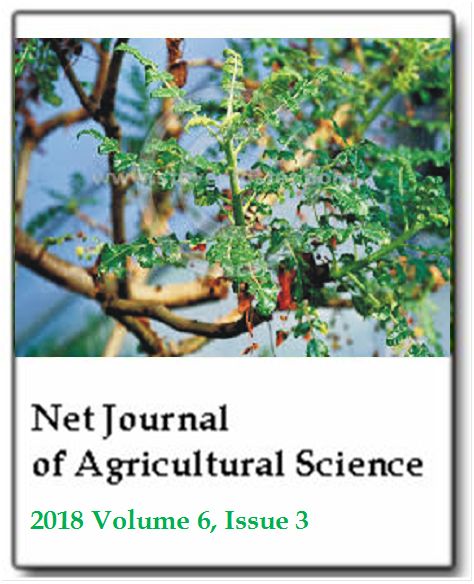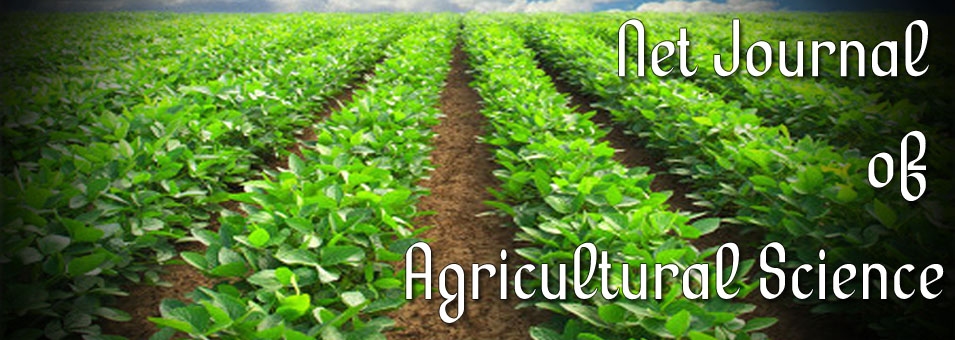Physical and chemical composition of soil collected from different habitats of Dumbi Inselberg in Zaria, Northern Guinea savanna, Nigeria
Tanko, D.Net Journal of Agricultural Science
Published: July 31 2018
Volume 6, Issue 3
Pages 35-41
DOl: https://doi.org/10.30918/NJAS.63.18.021
Abstract
For effectively functioning ecosystems, soil conservation in the means of physical and chemical properties is essential. Granite ecosystems have not received much attention in research and therefore, this study was carried out at an inselberg in Zaria in Nigeria. In the scope of this research, soils samples were collected at four locations (farmed lands, windward side, leeward side and the top of the inselberg) at depths 0 to 15 cm, 15 to 30 cm and 30 to 45 cm. The samples were analyzed for soil textural class, pH value, Organic Carbon and Exchangeable Cations. The study revealed higher percentage of clay and silt (28.93 and 12.90% respectively) in the windward samples which differed significantly (p < 0.05) with the other samples. Increase in clay contents with depth was statistically significant (p < 0.05). Silt in windward, leeward and inselberg did not differ significantly (p > 0.05), however the 3 samples differ significantly (p < 0.05) with the farmland. Sand distribution showed significant (P < 0.05) decrease with depth. The windward and cultivated soil samples had sand-clay-loam soil while the leeward and the rock outcrop had sandy-loamy soil. The soil pH ranged between 5.4 and 6.0 in all the samples. The pH in the cultivated plot differed significantly (P < 0.05) with the other 3 plots. The Organic Carbon (OC) was moderate (10.58 kg-1) in the leeward plot very low (<10 gkg-1) in the other plots. OC showed a significant (P < 0.05) decrease with depth. Exchangeable Magnesium differed significantly (p < 0.05) with depths but not with plots. The higher acidic reaction of cultivated soil compared to the other plots was probably caused by the use of inorganic fertilizer during crop farming. The medium soil organic content at the top soil was expected because organic debris often accumulated at the top soil. Significant increase in magnesium with depth was probably due to leaching. The soil characteristics of the study site revealed the nutrients level to be lower than expected of a forest outlier, rather, it correspond with other soils of the savanna wood land. This is an indication that inselberg’s habitats are currently witnessing degradation. Further studies on other inselbergs are hereby recommended.
Keywords: Soil, inselbergs, conservation, ecosystem, physical and chemical parameters, organic contents.
Full Text PDF
ISSN: 2315-9766
